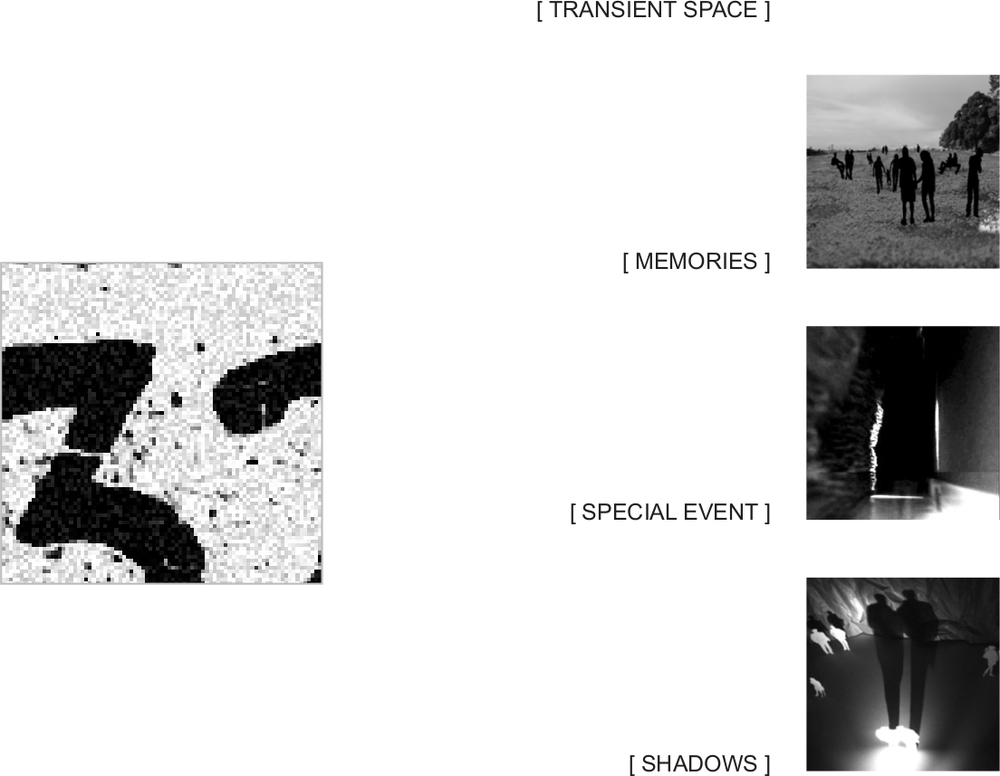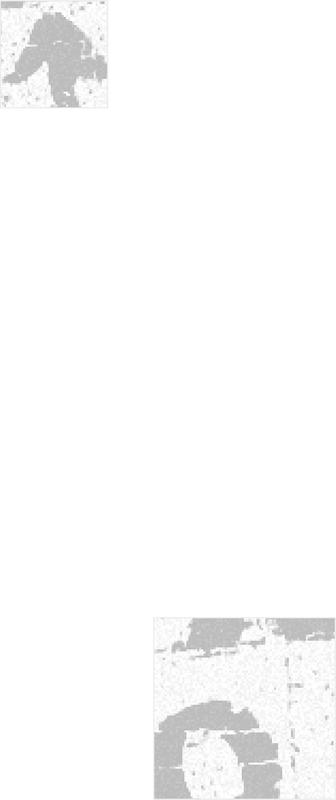19
RESPONSIVE ENVIRONMENT STUDIO
[JAPAN]
 206
206

207‘Responsiveness’ is a new element in the architect’s palette. To design a responsive environment is to understand the dependencies of space and human behaviour. In addition to inserting static elements into a space, we can design for the temporal patterns of human actions using the most simple and sustainable tactics. A responsive approach requires a sensitive reading of the inherent qualities of the space, upon which we infer the fundamental actions and perceptions of people in response to that space.
Building on this we can begin to introduce subtle, low impact interventions using light, sound, or water for example, to enhance and extract some new perceptual interactions with the space. We can introduce temporal change within these elements, or enable them to be reactive using new technology.
In this studio our aim was to design and build an ‘event’. Beyond architectural space, the brief required students to consider the integrated activities that occur in the space. These are evident as patterns, of movement or interactions, that collectively make the ‘scenery’ of the space. If we think about an ‘event’, it has a beginning and an end, and must therefore consider the ways people enter and leave it.
In the first phase, the students developed individual proposals for an event responding to a specific site on Cockatoo Island. As is documented in the following pages, these designs aimed to enhance the character of the space by heightening the senses, and creating an unexpected, theatrical and temporal transformation of it using subtle, ‘soft’ materials - light, sound, motion.
These ideas were then trialled in the second phase within which we tutors joined the students as equal participants to build and install a group work. Our collective goal was to design and implement an ‘event’ to be experienced by the 100 or so people coming to Cockatoo Island on the closing Review day. We chose the Turbine Hall for its striking infrastructures and vastness, and set about testing and selecting several subtle spatial techniques to transform its hidden character into something never to be forgotten, This work, ‘Soft Inversions’, is documented in Chapter 20.208
[TRANSIENT SPACE]
NGUYEN KHANG TRAN [SAM]


Cockatoo Island has hosted many programs throughout its history. Each activity on the site was replaced or influenced by newer activities. As a result the island is not only filled with traces of memories but also constantly changing to make new memories. A site-specific installation somehow has to respond to the island (space) and the memories (time).
The installation proposes to lay a new surface upon the former dry dock. The installation celebrates the major phases of shipbuilding industry 209on Cockatoo Island. As the visitor wondering on this surface, the space, shape and lighting of the surface begin to change according to their movements. All of this transforms the former dry dock into a transient space. The visitors will become aware of the properties of water beneath them and the boundary created by the shape of the dry dock.


This installation is successful because it involves human interaction. Each person creates his/her own space that is then influenced other spaces. Their space however then fades away to make way for new spaces created by other people. As the result each person only experience his or her space for a short period of time only, however they will leave traces of their path for others.210
[ MEMORIES ]
CAT DOWNIE


Cockatoo Island has witnessed many periods of occupation and usage, the place is haunted, scarred and distinguished by all the activities that have taken place and constituted its site. In respecting these layers of history and our place within its continuum, the installation sought to add another ‘layer’, which would however be ‘soft’ and temporal.
A former dry dock situated on ‘reclaimed’ land, the particular site chosen represents the Island’s major phases of ship building and convict occupation. An embodiment of these activities, the site required an installation that allowed for, and invited an intimate and playful investigation of its historic and rich ground plane.
The eerie emptiness of the Island’s vast expanses and the initial sense of isolation experienced were however tempered by the occupation, but a means by which one could make sense of the overwhelming scale of place and history by coming to a phenomenological understanding.211

The installation proposes to lay mounds of grain upon the dry dock surface. The grain not only references former grain storage onsite (wheat grain once occupied silos cut into the Island’s sandstone cliff) but more importantly provides an unexpected, luxurious, mediative layer that entices interaction and thereby affects the visitor to explore and experience the place with hands, feet and body. As the visitor ‘wades’ through the wheat grain she displaces the material, uncovering the existing ground plane. However between the visitor and the ground plane is another layer, a layer of glass. As the grain reveals this glass plane, its reflection of sky and light will likewise entice further exploration.
The installation uses ‘soft’, temporal layers to reveal place through interactive enticement. As a consequence the installation operates through, and is successful because of human involvement.212
[ SPECIAL EVENT ]
CARLO GO


A series of intense light beams scan across the narrow ravene created by the sandstone wall and the Turbine Hall - exposing the beautiful texture of the sandstone.213
 214
214
[ SHADOWS ]
SIDDHARTH MANSUKHANI


This intervention was intended to make the dramatic sandstone wall a significant feature of an outdoor dinner party event. It would act as a canvas on which the shadows of the people participating would be cast. Intense, moving spotlights 215placed in strategic locations behind the people would create the shadows. These silhouettes would be interacting with each other and would result in a performance for the participants. The movements and actions of the people dining would be exaggerated and displayed on the sandstone.

